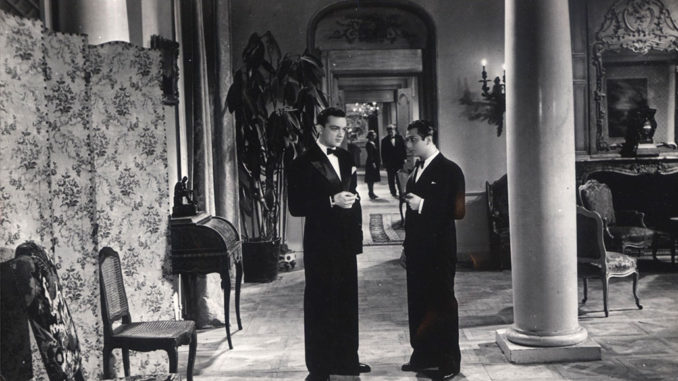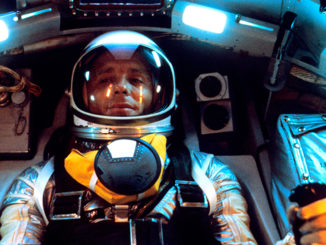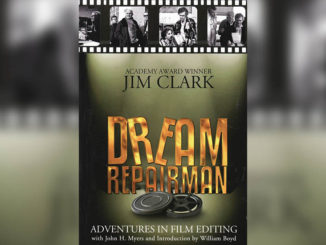
by Kevin Lewis
In 1959, when François Truffaut, along with his Nouvelle Vague colleagues, ushered in the renaissance of French film, director Jean Renoir (Truffaut’s personal idol) would finally see his butchered 1939 masterpiece, La Règle du Jeu (The Rules of the Game), reconstructed and recognized as one of the greatest films of world cinema. Renoir became the spiritual father for not only the French New Wave but the Italian and American ones as well. (Luchino Visconti was Renoir’s assistant director in the 1930s.)
In his memoir The Films In My Life, Truffaut wrote, “Along with Citizen Kane, The Rules of the Game is certainly the film that sparked the careers of the greatest number of directors.” In a letter to Renoir in 1969, he wrote, “I will always feel that my life is connected to the film you made.” Alain Resnais and Robert Altman used it as a template for their own films, especially the former’s Last Year at Marienbad (1961) and the latter’s Nashville (1975) and Gosford Park (2001). Bertrand Tavernier, in his 1993 article for London newspaper The Independent, compares the scene of the guests arriving at the chateau in Rules to an Altman film in its use of multiple characters in a shot with their overlapping dialogue.
“One does not know what a film is until it has been edited,” stated Renoir, in his autobiography, My Life and My Films. “The first showings of The Rules of the Game [60 years ago in July 1939] filled me with misgiving. It is a war film, and yet there is no reference to the war [which commenced less than two months later]. Beneath its seemingly innocuous appearance, the story attacks the very structure of our society… The audience recognized this. The truth is that they recognized themselves.” They regarded the film as “a personal insult,” according to the director.
Members of the audience booed and threw objects at the screen at those early screenings. Renoir cut the film from 94 minutes to 81, mainly trimming his own scenes as the character Octave. The film was banned, the official reason being that it was “too demoralizing.” Prints were burned by the Nazis and the original negative was destroyed by the Allies during a bombing raid.
But Anti-Semitism, which flourished in France––especially after the Munich Agreement in September 1938 between France, the United Kingdom and Germany, which betrayed Czechoslo-vakia––may have been the real reason for the hostile reaction and the banishment. The French-Jewish actor, Marcel Dalio, and the Austrian actress, Nora Gregor (the anti-Nazi Princess von Staremberg in real life), played the Marquis Robert de la Chesnaye and the Marquise Christine. French film critic George Sadoul called Rules the only French film “which expressed in film terms the spirit of confusion that prevailed after Munich and into the first months of the Second World War.”
The hunting party, which the great photographer Henri Cartier-Bresson directed and shot when he was Renoir’s assistant director on the film, is still brutal. Audiences and critics in 1939 were startled by the extreme shifts between farce and violence.
Dalio had played Rosenthal, the son of the rich Jewish industrialist in the anti-war The Grand Illusion in 1937. (In many respects, The Rules of the Game is a sequel to The Grand Illusion, which proffered that World War I patriotism was a sham.) In Rules, the servants are contemptuous of their master’s Jewish ancestry, and the German gamekeeper Schumacher calls the Marquis a dirty foreigner. The Marquis indicates that his royal title was purchased from an impoverished French aristocrat. Schumacher also kills the French aviator hero, Andre Jurieu––the only character who believes in honor rather than rules––in a case of mistaken identity. This may be a metaphor for a defeatist France.
Renoir loosely based his script on two classic French dramas, Les Caprices de Marianne by Alfred de Musset and Le Mariage de Figaro by Pierre-Augustin Caron de Beaumarchais, creating a multiple set of characters without a central character. There is no main character in the film, according to Renoir in his autobiography. “The conception I had from the beginning was of a film representing a society, a group,” he wrote. “I wanted to depict a class.” He was skeptical of the haute bourgeoisie––their proprietary motives and love of property––because he grew up among them as the scion of Pierre-Auguste Renoir, the great Impressionist painter of Belle Epoque society.
Renoir, who co-wrote the script, played Octave, the social parasite who sets the tragic game in motion by bringing the lovelorn but honorable aviator together with Christine, the Marquise, at the weekend chateau party of the Marquis. Octave mourns his lost dreams of being an orchestra conductor and lives off the Marquis, yet smugly tells Christine, “We live in an era where everybody lies––pharmaceutical advertisements, governments, the radio, the movies, the newspapers.”
The hunting party, which the great photographer Henri Cartier-Bresson directed and shot when he was Renoir’s assistant director on the film, is still brutal. Audiences and critics in 1939 were startled by the extreme shifts between farce and violence. Such comic opera plot devices, such as mistaken identity and slumming masters switching clothing with insouciant servants for lecherous purpose, make the unexpected hunt scene more shocking. The brutal hunting scene, with the servants beating the bushes for every living animal, “validates the reality of the film, especially the extended close-up of the mortally wounded rabbit in its death spasms,” according to film critic Andrew Sarris.
In his notes for the new Criterion Collection’s two-disc DVD edition of The Rules of the Game (one of its many academic bonus features), film scholar Alexander Sesonske called that hunting scene Renoir’s “symbolic core of his critique of French society… In a film whose shots often run for a minute or more, here 51 shots appear in less than four minutes, in a mounting rhythm of cutting and movement that culminates in that awesome barrage of gunfire, as within 22 shots––53 seconds––12 animals die. Surely one of the most powerful scenes in all of cinema.”
The second hunting scene takes place in the chateau, at which some of the guests dance in skeleton costumes to the “Danse Macabre.” Schumacher races through the party shooting at the poacher for seducing his wife, the Marquise’s maid. The Marquis orders his majordomo, Corneille (another reference to French theatre: Pierre Corneille, the 17th-century playwright of tragedies), “Put an end to this farce!” Corneille replies, “Which one, your lordship?” Renoir, of course, was referring to the tragedy of France itself.
Ironically, the farce ended for France in WWII where the film itself was shot––in Sologne, the last stand of the French Army in 1940 and the place where the Nazi Occupation began.





